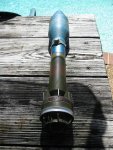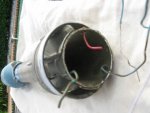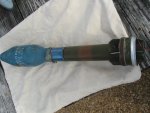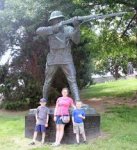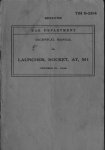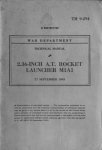U.S. models Ml, M9 and M18, cal. 2.36" Rocket launcher (Bazooka) and variations thereof.
Bazooka
Operation Rocket launcher, electrically fired
Caliber 2.36 in.(60 mm)
Muzzle velocity 84 mps(275 fps)
Weight 8.1 kg(18 lbs)
Overall length 154.9 cm(61 in.)
Range 455 m(500 yds)
In response to the need for an infantry antitank weapon, Leslie A. Skinner and Edward G. Uhl of the Ordnance Departent developed the bazooka - a metal tube that used an electrical firing mechanism - by early 1942. Until then American infantry had lacked an antitank rocket capable of stopping a tank. Another member of the Ordnance Department, Henry H. Mohaupt, had been working on a shaped charge grenade for use by infantry against tanks. Mohaupt's M10 grenade weighed over 3.5 lbs, making it nearly impossible to throw effectively. However, when Skinner and Uhl attached one of Mohaupt's grenades to a rocket, then hit a tank on three successive shots during testing, the Ordnance Department immediately recognized the value of this new weapon. Many bazookas were shipped to America's allies; in fact, when the Germans captured one from the Russians, they copied the design to produce the Panzerschreck ("Tank Terror"). The bazooka was named for a musical contraption devised by comedian Bob Burns.
and then the super bazooka
The M20A1 and M20A1B1 rocket launchers are two-piece smooth-bore weapons of the open tube type and are fired by an electrical firing mechanism, which contains a magneto that provides the current and is located in the trigger grip.
These launchers are designed to be fired from the shoulder in standing, kneeling, sitting, or prone position. To reduce weight, the barrels and many of the components are made of aluminum.
These launchers are designed to launch high explosive rockets and smoke rockets against ground targets. These high-explosive antitank rockets are capable of penetrating heavy armor at angles of impact greater than 30°.
Replaced the M9A1 2.36 inch (60 mm) rocket launcher. The M20 rocket launcher was used extensively during the Korean War, where its HEAT rocket proved effective against T34 tanks. No longer in U.S. service. Replaced by the M72 LAW.
